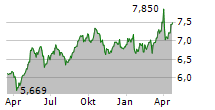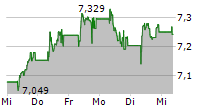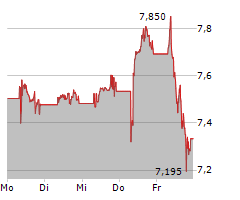
The "Europe Second-Life EV Batteries Market: Focus on Application, Product, and Country Analysis and Forecast, 2024-2033" report has been added to ResearchAndMarkets.com's offering.
The Europe second-life EV batteries market is positioned for substantial growth. It was valued at $188.3 million in 2023 and is expected to reach $5.85 billion by 2033, reflecting a CAGR of 40.93%.
Europe's second-life EV batteries market is poised for significant expansion driven by multiple factors. The surge in EV sales is generating a substantial supply of retired batteries, which are increasingly recognized for their potential in stationary energy storage applications. Concurrently, the escalating deployment of renewable energy sources necessitates efficient and cost-effective energy storage solutions, further enhancing the market's appeal. Government initiatives and subsidies play a pivotal role as they incentivize the adoption of second-life batteries, promoting sustainability and circular economy principles. By repurposing these batteries for stationary storage, Europe aims to reduce waste and mitigate the depletion of natural resources, aligning with stringent environmental regulations and sustainability targets. This optimistic forecast anticipates a dynamic market environment where technological advancements and supportive policies drive continuous innovation and investment in leveraging second-life EV batteries for stationary energy storage across Europe.
Non-Automotive Segment to Dominate the Europe Second-Life EV Batteries Market (by Application)
The application of second-life EV batteries in non-automotive sectors is crucial in the Europe market, particularly for power backup, grid connection, and solar energy storage. These batteries optimize energy storage performance and longevity by efficiently managing states such as voltage, temperature, and charge status. By precisely controlling and regulating charging and discharging processes, they enhance system efficiency and ensure batteries operate within safe parameters, balancing the charge to prevent overcharging or deep discharging. Advanced second-life battery systems also integrate with grid management and renewable energy systems, offering real-time data for predictive maintenance and energy management. This integration significantly extends battery life, improves reliability, and maximizes efficient power use, contributing to environmental sustainability.
Lithium-Ion Segment to Dominate the Market (by Battery Type)
Lithium-ion batteries dominate the Europe second-life EV batteries market due to their exceptional performance and reliability. Renowned for their high energy density, lightweight, and long cycle life, Li-ion batteries are ideal for secondary applications such as energy storage systems, grid support, and renewable energy integration. In second-life uses, these batteries continue to provide significant benefits by maintaining a substantial portion of their original capacity. Their high energy-to-weight ratio ensures efficient energy storage in compact spaces, which is crucial for stationary systems. With extended lifespans and the ability to rapidly charge and discharge, Li-ion batteries reduce maintenance costs and enhance operational efficiency. Their minimal self-discharge rate allows for longer storage periods without significant energy loss, solidifying their position as the leading battery type in the Europe second-life EV batteries market.
Recent Developments in the Europe Second-Life EV Battery Market
- In May 2024, Connected Energy Ltd.'s launch of an online calculator marks a strategic move to empower stakeholders in the EV ecosystem. By providing a tool to evaluate the integration of battery energy storage systems with EV charging infrastructure, the company enhances decision-making capabilities for fleet depots, charging hubs, and dealerships.
- In May 2024, STABL Energy GmbH, known for its scalable industrial battery storage solutions, partnered with NOVUM Engineering, leveraging NOVUM's AI-based battery diagnostics expertise. This collaboration aims to repurpose high-quality automotive batteries, enhancing energy efficiency and sustainability. By optimizing battery storage systems through innovative technology, this partnership underscores STABL Energy's commitment to advancing sustainable energy solutions.
Market Driver: Growth in EV Sales Resulting in Increased Availability of Retired EV Batteries
The surge in electric vehicle (EV) sales across Europe is significantly driving the market for second-life EV batteries. This growth is attributed to several factors, including increased consumer demand for sustainable transportation solutions, supportive government policies, and advancements in EV technology. According to the European Automobile Manufacturers Association (ACEA), the market share of hybrid electric vehicles accounted for 19.6% of all new passenger cars registered across the EU in 2021, while BEV accounted for 9.1% and PHEV for 8.9%, reflecting a substantial increase from previous years. This trend is expected to continue, with projections indicating that EVs will dominate the automotive market in the coming decades. As EV adoption accelerates, the volume of retired EV batteries is also increasing.
By 2030, in Italy alone, it is estimated that 60,000 tons of electric vehicle batteries will have to be disposed of per year. These batteries, though no longer suitable for automotive use, still retain substantial capacity for other applications. The European Environment Agency (EEA) reports that the typical EV battery retains up to 70-80% of its initial capacity even after it is retired from vehicle use. This residual capacity presents a valuable opportunity for repurposing in secondary applications, such as stationary energy storage systems, grid stabilization, and renewable energy integration. Furthermore, the European Union's regulatory framework supports the reuse and recycling of EV batteries, aligning with the region's broader circular economy goals. The EU Battery Directive emphasizes sustainable battery management practices, including recycling and repurposing end-of-life batteries. This regulatory environment not only encourages the development of second-life battery solutions but also ensures compliance and standardization across the market.
Market Challenge: Lack of Established Standards for Second-Life Battery Quality and Performance
A significant restraint for the Europe second-life EV batteries market is the lack of established standards for battery quality and performance. This absence of standardized criteria poses several challenges for stakeholders across the supply chain, from manufacturers to end users. Without clear guidelines, it is difficult to ensure the reliability and safety of repurposed batteries, which can vary widely in terms of capacity, efficiency, and longevity.
The European Union has recognized the importance of creating a cohesive regulatory framework for second-life batteries, yet progress has been slow. While efforts are underway to develop standards, the current landscape remains fragmented, causing uncertainty and hesitation among potential investors and adopters. This fragmentation can lead to inconsistent performance and safety issues, ultimately undermining consumer confidence and market growth.
Moreover, the lack of standards complicates the valuation and insurance of second-life batteries. Financial institutions and insurers are often reluctant to provide funding or coverage for assets with unpredictable performance metrics, further stifling market expansion. This issue is particularly pressing as the market scales up. The projected increase in second-life battery applications will require robust quality assurance mechanisms to ensure market stability and consumer protection.
In conclusion, the absence of established standards for second-life EV battery quality and performance is a critical market restraint in Europe. Addressing this challenge through comprehensive regulatory frameworks and industry-wide standards is essential for fostering confidence, ensuring safety, and supporting sustainable growth in the Europe second-life EV batteries market. Establishing such standards will not only enhance the reliability of repurposed batteries but also facilitate greater investment and adoption, driving the market forward.
Key Market Players and Competition Synopsis
Some of the prominent names in this market are:
- BeePlanet Factory
- Connected Energy
- Zenobe Energy
- B-ON
- ECO STOR
- Enel Spa
- Octave
- TRICERA energy
- encore
- STABL Energy
Key Attributes:
| Report Attribute | Details |
| No. of Pages | 107 |
| Forecast Period | 2024 2033 |
| Estimated Market Value (USD) in 2024 | $267.3 Million |
| Forecasted Market Value (USD) by 2033 | $5859.5 Million |
| Compound Annual Growth Rate | 40.9% |
| Regions Covered | Europe |
Key Topics Covered:
1 Market
1.1 Regional Overview
1.2 Market Dynamics: Overview
1.2.1 Market Drivers
1.2.1.1 Growth in EV Sales Resulting in Increased Availability of Retired EV Batteries
1.2.1.2 Increasing Deployment of Renewable Energy Sources
1.2.1.3 Reducing the Amount of Waste Generated and Preventing Additional Depletion of Earth's Minerals
1.2.2 Market Restraints
1.2.2.1 Lack of Established Standards for Second-Life Battery Quality and Performance
1.2.2.2 Declining Costs of New Batteries
1.2.3 Market Opportunities
1.2.3.1 Government Initiatives and Subsidies
1.2.3.2 Using Second-Life Batteries in Stationary Energy Storage
1.3 Trends: Current and Future Impact Assessment
1.3.1 Enhancing Second-Life Battery Performance with BMS and SOH Monitoring
1.3.2 Promoting a Circular Economy with Second-Life Batteries
1.4 Supply Chain Overview
1.5 Research and Development Review
1.6 Regulatory Landscape
1.7 Need for Grid Integration
1.8 Power Consumption by Electric Vehicle vs. Building Power Consumption
1.9 Repurposing Second-Use Batteries
1.10 Incorporation of Renewable Energy Sources
1.11 Support for Sustainable Energy Transition
2 Application
2.1 Application Summary
2.2 Europe Second-Life EV Batteries Market (by Application)
2.2.1 Non-Automotive Applications
2.2.2 Automotive Applications
3 Products
3.1 Product Summary
3.2 Europe Second-Life EV Batteries Market (by Battery Type)
3.2.1 Lithium-Ion
3.2.2 Lead-Acid
3.2.3 Nickel-Based
3.2.4 Other Batteries
4 Countries
5 Markets Competitive Benchmarking Company Profiles
For more information about this report visit https://www.researchandmarkets.com/r/9tftaq
About ResearchAndMarkets.com
ResearchAndMarkets.com is the world's leading source for international market research reports and market data. We provide you with the latest data on international and regional markets, key industries, the top companies, new products and the latest trends.
View source version on businesswire.com: https://www.businesswire.com/news/home/20240827692405/en/
Contacts:
ResearchAndMarkets.com
Laura Wood, Senior Press Manager
press@researchandmarkets.com
For E.S.T Office Hours Call 1-917-300-0470
For U.S./ CAN Toll Free Call 1-800-526-8630
For GMT Office Hours Call +353-1-416-8900





